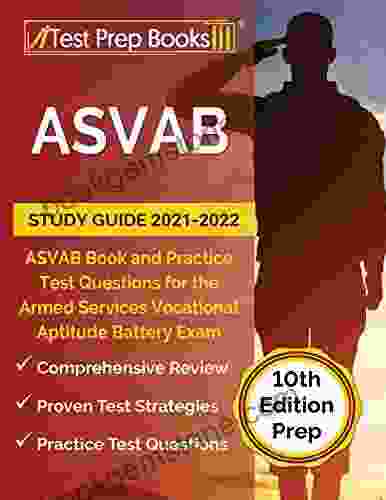Basics of Fluid, Electrolyte, and Acid-Base Disturbances: A Comprehensive Guide

Fluid, electrolyte, and acid-base balance are essential for maintaining optimal health. When these balances are disrupted, it can lead to a variety of health problems, ranging from mild symptoms to life-threatening emergencies. This article provides a comprehensive overview of the basics of fluid, electrolyte, and acid-base disturbances, including their symptoms, causes, and treatment.
5 out of 5
| Language | : | English |
| File size | : | 4448 KB |
| Text-to-Speech | : | Enabled |
| Screen Reader | : | Supported |
| Enhanced typesetting | : | Enabled |
| Print length | : | 133 pages |
Fluid Balance
Fluid balance refers to the balance between the amount of fluids that enter and leave the body. When fluid intake and output are equal, the body is in fluid balance. However, when fluid intake exceeds output, the body is in fluid overload. Conversely, when fluid output exceeds intake, the body is in fluid deficit.
Fluid overload can occur due to a variety of factors, including excessive fluid intake, impaired fluid excretion, or a combination of both. Symptoms of fluid overload can include swelling, weight gain, and shortness of breath. In severe cases, fluid overload can lead to heart failure and other life-threatening complications.
Fluid deficit can also occur due to a variety of factors, including inadequate fluid intake, excessive fluid loss, or a combination of both. Symptoms of fluid deficit can include thirst, fatigue, and dizziness. In severe cases, fluid deficit can lead to shock and other life-threatening complications.
Electrolyte Balance
Electrolytes are minerals that are dissolved in body fluids. The most important electrolytes include sodium, potassium, chloride, and bicarbonate. Electrolytes play a vital role in a variety of bodily functions, including nerve transmission, muscle contraction, and fluid balance.
Electrolyte disturbances can occur when the levels of electrolytes in the body are too high or too low. Hypernatremia is a condition in which the sodium levels in the body are too high. Symptoms of hypernatremia can include thirst, fatigue, and confusion. In severe cases, hypernatremia can lead to seizures and coma.
Hyponatremia is a condition in which the sodium levels in the body are too low. Symptoms of hyponatremia can include nausea, vomiting, and seizures. In severe cases, hyponatremia can lead to coma and death.
Hyperkalemia is a condition in which the potassium levels in the body are too high. Symptoms of hyperkalemia can include muscle weakness, nausea, and vomiting. In severe cases, hyperkalemia can lead to cardiac arrest.
Hypokalemia is a condition in which the potassium levels in the body are too low. Symptoms of hypokalemia can include muscle weakness, fatigue, and constipation. In severe cases, hypokalemia can lead to respiratory failure and death.
Acid-Base Balance
Acid-base balance refers to the balance between the acids and bases in the body. The pH of the blood is a measure of the body's acid-base balance. A pH of 7.35 to 7.45 is considered normal. When the pH of the blood is below 7.35, the body is in acidosis. When the pH of the blood is above 7.45, the body is in alkalosis.
Acidosis can occur due to a variety of factors, including the accumulation of acids in the body, the loss of bases from the body, or a combination of both. Symptoms of acidosis can include nausea, vomiting, and headache. In severe cases, acidosis can lead to coma and death.
Alkalosis can occur due to a variety of factors, including the accumulation of bases in the body, the loss of acids from the body, or a combination of both. Symptoms of alkalosis can include muscle cramps, nausea, and vomiting. In severe cases, alkalosis can lead to coma and death.
Treatment of Fluid, Electrolyte, and Acid-Base Disturbances
The treatment of fluid, electrolyte, and acid-base disturbances depends on the underlying cause. In some cases, treatment may involve simply correcting the underlying cause. In other cases, treatment may involve administering fluids, electrolytes, or medications to correct the imbalance.
Fluid overload is treated by restricting fluid intake and administering diuretics to increase fluid output. Fluid deficit is treated by administering fluids, either orally or intravenously. Electrolyte disturbances are treated by administering electrolytes, either orally or intravenously. Acid-base disturbances are treated by administering acids or bases, depending on the type of imbalance.
Fluid, electrolyte, and acid-base balance are essential for maintaining optimal health. When these balances are disrupted, it can lead to a variety of health problems. By understanding the basics of fluid, electrolyte, and acid-base disturbances, you can help to prevent and treat these conditions.
5 out of 5
| Language | : | English |
| File size | : | 4448 KB |
| Text-to-Speech | : | Enabled |
| Screen Reader | : | Supported |
| Enhanced typesetting | : | Enabled |
| Print length | : | 133 pages |
Do you want to contribute by writing guest posts on this blog?
Please contact us and send us a resume of previous articles that you have written.
 Best Book
Best Book Page Flip
Page Flip Bookshelf
Bookshelf Literary loom
Literary loom Chapter
Chapter Bookish
Bookish PageTurner
PageTurner Bibliophile
Bibliophile Story
Story Inkwell
Inkwell Bookworm
Bookworm Labyrinth
Labyrinth Plot Twist
Plot Twist Prose
Prose Paperback
Paperback Storyteller
Storyteller Sanctuary
Sanctuary Fiction
Fiction Reading
Reading Chronicle
Chronicle Read
Read Lance Pototschnik
Lance Pototschnik Stephen Ausherman
Stephen Ausherman Print Replica Kindle Edition
Print Replica Kindle Edition Jocelyn Jane Cox
Jocelyn Jane Cox Joshua Jelly Schapiro
Joshua Jelly Schapiro Genius Reads
Genius Reads James Cave
James Cave Mary Ann Hogan
Mary Ann Hogan Robert Crais
Robert Crais Educational Testing Service
Educational Testing Service Dr John Hockey
Dr John Hockey Janet Chapple
Janet Chapple Hugo Banzer Suarez
Hugo Banzer Suarez Grady Hendrix
Grady Hendrix Nicholas Crowder
Nicholas Crowder James Cowan
James Cowan Simon Richmond
Simon Richmond Tim Dowley
Tim Dowley John Rae
John Rae Elizabeth Hay
Elizabeth Hay Tim Brown
Tim Brown Konstantinos Mylonas
Konstantinos Mylonas Brooks Fiesinger
Brooks Fiesinger Marie Cirano
Marie Cirano Martin Woodward
Martin Woodward Dr Ray Makar
Dr Ray Makar Stephen John
Stephen John Nicolas Rodak
Nicolas Rodak Steve Warner
Steve Warner John Seibert Farnsworth
John Seibert Farnsworth Osasumwen Asoro
Osasumwen Asoro Michael Vlessides
Michael Vlessides Stuart Woods
Stuart Woods L Waxy Gregoire
L Waxy Gregoire Moshe Ohayon
Moshe Ohayon Sharon A Wynne
Sharon A Wynne Khaled Hosseini
Khaled Hosseini Sandra Dallas
Sandra Dallas Laura Peyton Roberts
Laura Peyton Roberts Mitt Romney
Mitt Romney Kenneth Oppel
Kenneth Oppel Kazim Ali
Kazim Ali Scott Butler
Scott Butler Jean Vives
Jean Vives Terry Pratchett
Terry Pratchett General
General Ted Chiang
Ted Chiang C F Crist
C F Crist Jeffrey Alford
Jeffrey Alford Trevanian
Trevanian Nielson Phu
Nielson Phu Christine Wilcox
Christine Wilcox Khalid Khashoggi
Khalid Khashoggi Katrina Lawrence
Katrina Lawrence Savage Greenboro
Savage Greenboro Morgan Stafford
Morgan Stafford Rupika Raj
Rupika Raj Dk
Dk Mariah Laine Moyle
Mariah Laine Moyle Shanta Kumar
Shanta Kumar Richard Kadrey
Richard Kadrey Katherine Nouri Hughes
Katherine Nouri Hughes Leslie Davenport
Leslie Davenport Rick Steves
Rick Steves Simon Turney
Simon Turney Keri Bloomfield
Keri Bloomfield Kim Heinbuch
Kim Heinbuch Lucy Coleman
Lucy Coleman Joe Pelletier
Joe Pelletier Len Airey
Len Airey Mark Zegarelli
Mark Zegarelli John Walters
John Walters Christophe P Yerling Ph D
Christophe P Yerling Ph D Yaa Gyasi
Yaa Gyasi Joeanna Rebello Fernandes
Joeanna Rebello Fernandes Simon Hart
Simon Hart Xavier Marie Bonnot
Xavier Marie Bonnot Joseph Robertia
Joseph Robertia Horace C A
Horace C A Brian Mcfarlane
Brian Mcfarlane Kevin Biggar
Kevin Biggar Rex Nelson
Rex Nelson Ian C Friedman
Ian C Friedman Karsten Heuer
Karsten Heuer Huma Filo
Huma Filo Edward R Lachapelle
Edward R Lachapelle John W Lundin
John W Lundin Edulink Gmbh
Edulink Gmbh Trivium Test Prep
Trivium Test Prep Kira Salak
Kira Salak W E B Griffin
W E B Griffin Anuj Tikku
Anuj Tikku Pauline Harmange
Pauline Harmange Mike Chambers
Mike Chambers Mark Lee
Mark Lee Cliff Seruntine
Cliff Seruntine Skip Hollandsworth
Skip Hollandsworth Laura Lee Smith
Laura Lee Smith Michael Corayer
Michael Corayer Colson Whitehead
Colson Whitehead Matthew Simon
Matthew Simon Kevin Marx
Kevin Marx Douglas J Gould
Douglas J Gould Jay Kirk
Jay Kirk Sophie Fuggle
Sophie Fuggle Nicholas Bjorn
Nicholas Bjorn Rebecca E F Barone
Rebecca E F Barone Kayla Chalko
Kayla Chalko Language Guru
Language Guru Kate Williams
Kate Williams Luca Vargiu
Luca Vargiu Anita Landoll
Anita Landoll Tim Notier
Tim Notier Richard Henry Dana
Richard Henry Dana Kristopher Martel
Kristopher Martel Seyyed Hossein Nasr
Seyyed Hossein Nasr Saroo Brierley
Saroo Brierley Rajani Katta
Rajani Katta Marie Benedict
Marie Benedict Mark Mclaughlin
Mark Mclaughlin Mauricio Fau
Mauricio Fau Triumphant Test Prep
Triumphant Test Prep R Raman
R Raman Seth Abramson
Seth Abramson Dr Jyuthica Laghate
Dr Jyuthica Laghate Manfred Theisen
Manfred Theisen Tim Hannigan
Tim Hannigan Louis L Amour
Louis L Amour Raquel Baccetto
Raquel Baccetto William Pitts
William Pitts Lucille Recht Penner
Lucille Recht Penner Jeff Hay
Jeff Hay Caitlin Doughty
Caitlin Doughty Dixie Dansercoer
Dixie Dansercoer Andy Russell
Andy Russell Felicie Williams
Felicie Williams A R Vasishtha
A R Vasishtha Sean Dietrich
Sean Dietrich Nicholas Gallo
Nicholas Gallo Joshua Armstrong
Joshua Armstrong Neha Gupta
Neha Gupta Jenny Mackay
Jenny Mackay Sara Wheeler
Sara Wheeler Andrew Hempstead
Andrew Hempstead Smart Edition
Smart Edition Carlos A Caggiani
Carlos A Caggiani Anna Curran
Anna Curran Smart Reads
Smart Reads Preston George Pysh
Preston George Pysh John Hemming
John Hemming Jack Slater
Jack Slater Sport Hour
Sport Hour Juliet Grames
Juliet Grames Topher Donahue
Topher Donahue John Germov
John Germov Kathleen Kirkland
Kathleen Kirkland Edna Fernandes
Edna Fernandes Ashley Schmitt
Ashley Schmitt Businessnews Publishing
Businessnews Publishing John Murray
John Murray Redhen Family
Redhen Family Nisha Garg
Nisha Garg Frosty Wooldridge
Frosty Wooldridge Helene St James
Helene St James Kim Heldman
Kim Heldman Hicham And Mohamed Ibnalkadi
Hicham And Mohamed Ibnalkadi Eric Bodnar
Eric Bodnar G Neri
G Neri Nick Angelis
Nick Angelis 50minutes Com
50minutes Com Prepvantage
Prepvantage Janet Evans
Janet Evans Peterson S
Peterson S Emily Colin
Emily Colin Gavin Francis
Gavin Francis Rory Stewart
Rory Stewart Tim Bauerschmidt
Tim Bauerschmidt Bruce Hunt
Bruce Hunt Steven W Dulan
Steven W Dulan Kindle Edition
Kindle Edition Ray Walker
Ray Walker Fethi Mansouri
Fethi Mansouri Helen Dunn Frame
Helen Dunn Frame Aminta Arrington
Aminta Arrington Greg Gilhooly
Greg Gilhooly Garry Burnett
Garry Burnett Helene Martensson
Helene Martensson Illustrated Edition Kindle Edition
Illustrated Edition Kindle Edition Pip Williams
Pip Williams Alan Charlesworth
Alan Charlesworth Joel J Lerner
Joel J Lerner Jackson Carter
Jackson Carter Hannah Tyson
Hannah Tyson Joseph Phillips
Joseph Phillips Ross Blankenship
Ross Blankenship Michael Powell
Michael Powell Mark Dawson
Mark Dawson S K Gupta
S K Gupta Lawrence Durrell
Lawrence Durrell Deanna Raybourn
Deanna Raybourn Michele Shriver
Michele Shriver Gregg Hurwitz
Gregg Hurwitz Jeremy K Davis
Jeremy K Davis Disha Experts
Disha Experts Insight Guides
Insight Guides David J Rothman
David J Rothman Gina Wisker
Gina Wisker Bruce Boudreau
Bruce Boudreau Boye Lafayette De Mente
Boye Lafayette De Mente Bob Duff
Bob Duff Stephan Orth
Stephan Orth Erin Trahan
Erin Trahan J R Haseloff
J R Haseloff William Wadsworth
William Wadsworth Lorelou Desjardins
Lorelou Desjardins Russell Streeter
Russell Streeter Russell Maddicks
Russell Maddicks Nachole Johnson
Nachole Johnson Richard Bak
Richard Bak Susan Weese
Susan Weese Alexis Lipsitz Flippin
Alexis Lipsitz Flippin Ben Malisow
Ben Malisow Dan Fullerton
Dan Fullerton Alex Hibbert
Alex Hibbert Jim Mancuso
Jim Mancuso Mark Rosenman
Mark Rosenman Lonely Planet
Lonely Planet Amy Wilentz
Amy Wilentz Supersummary
Supersummary Fridtjof Nansen
Fridtjof Nansen Rob Pate
Rob Pate Christopher D Nolan
Christopher D Nolan Mark Greaney
Mark Greaney Helen Wenley
Helen Wenley Laura Lincoln Maitland
Laura Lincoln Maitland Ross Bonander
Ross Bonander Bob Shepton
Bob Shepton Elaine Sciolino
Elaine Sciolino Alina Adams
Alina Adams John Howells
John Howells Ken Griffey Jr
Ken Griffey Jr Rosita Forbes
Rosita Forbes Zanna Sloniowska
Zanna Sloniowska Caryn Boddie
Caryn Boddie Zip Reads
Zip Reads Vince Kotchian
Vince Kotchian Julia Ann Clayton
Julia Ann Clayton Paul Johnson
Paul Johnson Randy Wayne White
Randy Wayne White Jamie Jensen
Jamie Jensen Monica Sorrenson
Monica Sorrenson Michelle Lee
Michelle Lee Nick Smith
Nick Smith Fred Ray Lybrand
Fred Ray Lybrand Nikki Nichols
Nikki Nichols Sigrid Fry Revere
Sigrid Fry Revere Fiona Gibson
Fiona Gibson Michel Roy
Michel Roy Jay H Lefkowitch
Jay H Lefkowitch Manny Serrato
Manny Serrato Cindi Myers
Cindi Myers Rhonda Leeman Taylor
Rhonda Leeman Taylor Ana Sortun
Ana Sortun Elena Leman
Elena Leman Ged Wilmot
Ged Wilmot Kristine Ellingson
Kristine Ellingson Maria Montessori
Maria Montessori Laura Albritton
Laura Albritton Jane Moore
Jane Moore Justin Goldman
Justin Goldman Philip Jackson
Philip Jackson Gil Martin
Gil Martin Ted Kulfan
Ted Kulfan Patricia Briggs
Patricia Briggs J D Ware
J D Ware Laura Ben David
Laura Ben David William Shakespeare
William Shakespeare Balazs Csigi
Balazs Csigi Bookrags Com
Bookrags Com Roy Fisher
Roy Fisher United States Government Us Army
United States Government Us Army Richard Palmer
Richard Palmer John Gilstrap
John Gilstrap Angela Stevens
Angela Stevens Hugh Sinclair
Hugh Sinclair Gerald Hausman
Gerald Hausman John Scherber
John Scherber Luca Brambilla
Luca Brambilla Nick Adams
Nick Adams Narasimha Karumanchi
Narasimha Karumanchi Wayne Johnston
Wayne Johnston Andrew Hudgins
Andrew Hudgins Markes E Johnson
Markes E Johnson Ben Tall
Ben Tall Rochelle Knight
Rochelle Knight Julia Quinn
Julia Quinn John Morrison
John Morrison Sylvain Tesson
Sylvain Tesson Nadav Snir
Nadav Snir Snap Summaries
Snap Summaries Ron Siliko
Ron Siliko Lesley Jane Eales Reynolds
Lesley Jane Eales Reynolds Greg Breining
Greg Breining Lawrence Osborne
Lawrence Osborne One Edition Kindle Edition
One Edition Kindle Edition Matt Racine
Matt Racine Lally Brown
Lally Brown Michael Renshaw
Michael Renshaw Cosmic Kids Publications
Cosmic Kids Publications John Merriam
John Merriam John Henderson
John Henderson Doug Gaskill
Doug Gaskill Megan Poore
Megan Poore Dr Lew Deitch
Dr Lew Deitch Fodor S Travel Guides
Fodor S Travel Guides Kevin Shea
Kevin Shea Rod Kulbach
Rod Kulbach Eugene C Toy
Eugene C Toy Kerry Karram
Kerry Karram Lonely Planet Kids
Lonely Planet Kids Patrick O Sullivan
Patrick O Sullivan Kaplan Test Prep
Kaplan Test Prep Brien Foerster
Brien Foerster Emily Kimelman
Emily Kimelman Rico Austin
Rico Austin William Ma
William Ma Ian Tuhovsky
Ian Tuhovsky J Maarten Troost
J Maarten Troost Tracy Johnston
Tracy Johnston Cyndi Kinney
Cyndi Kinney Tao Le
Tao Le William W Johnstone
William W Johnstone Jared Derksen
Jared Derksen George Orwell
George Orwell Narendra Kumar V
Narendra Kumar V C E Flores
C E Flores Terry Frei
Terry Frei Carla Mooney
Carla Mooney Wizer
Wizer Rachel Russ
Rachel Russ Edwyn Forest
Edwyn Forest Sigurd F Olson
Sigurd F Olson Grace Barrington Shaw
Grace Barrington Shaw Lingo Mastery
Lingo Mastery John Keahey
John Keahey Quick Reads
Quick Reads Garry J Shaw
Garry J Shaw Robert B Parker
Robert B Parker Rusty Young
Rusty Young Lucy Peet
Lucy Peet Lisa Kleypas
Lisa Kleypas Philip Donlay
Philip Donlay Harley Wylde
Harley Wylde Prasad Raju V V N R Pathapati
Prasad Raju V V N R Pathapati Jon A Archambault
Jon A Archambault Tessa Dare
Tessa Dare Janice K Ledford
Janice K Ledford Nicholas J Cotsonika
Nicholas J Cotsonika Maria Spantidi
Maria Spantidi Jen Beck Seymour
Jen Beck Seymour Jeanie Buss
Jeanie Buss Tony Daffern
Tony Daffern Robert N Rosen
Robert N Rosen Evie Litton
Evie Litton Zigzag English
Zigzag English Tony Horwitz
Tony Horwitz Um A Yube
Um A Yube Kaye Edwards
Kaye Edwards Baby Professor
Baby Professor Peter Mansfield
Peter Mansfield Joseph Toone
Joseph Toone Kathleen Norris
Kathleen Norris Chic Scott
Chic Scott T A Williams
T A Williams Robert Finch
Robert Finch Pamela K Lamb
Pamela K Lamb Steven Cowie
Steven Cowie Proprietary Edition Kindle Edition
Proprietary Edition Kindle Edition Sarah Vowell
Sarah Vowell Dr Hooelz
Dr Hooelz Wayne J Lutz
Wayne J Lutz Shay Spivey
Shay Spivey Benjamin P Bowser
Benjamin P Bowser Jason Dean
Jason Dean Approach Guides
Approach Guides Tania N Shah
Tania N Shah Con Coughlin
Con Coughlin Warwick Trucker
Warwick Trucker Meghan Mccarthy
Meghan Mccarthy Ingrid P Wicken
Ingrid P Wicken Ibl Press
Ibl Press Wolfgang Daunicht
Wolfgang Daunicht John Hiker
John Hiker Nigel Cliff
Nigel Cliff Rich Polanco
Rich Polanco Ilona Andrews
Ilona Andrews Jane Bottomley
Jane Bottomley David Gordon
David Gordon Wickaninnish Inn
Wickaninnish Inn David Archer
David Archer Bob Mckenzie
Bob Mckenzie Pat Thomson
Pat Thomson Michele G Kunz
Michele G Kunz Steve Schwartz
Steve Schwartz Lewis Morris
Lewis Morris Douglas Preston
Douglas Preston Eric Newman
Eric Newman Isee Exam Preparation Experts
Isee Exam Preparation Experts Paul Watson
Paul Watson Kristin Hannah
Kristin Hannah Jesse M Ehrenfeld
Jesse M Ehrenfeld Jason Hogan
Jason Hogan Wilfred M Mcclay
Wilfred M Mcclay Lloyd Richardson
Lloyd Richardson Robert Cargill
Robert Cargill Mike Kraus
Mike Kraus Manik Sheoran
Manik Sheoran Francis J Buckley
Francis J Buckley Vincent Chidindu Asogwa
Vincent Chidindu Asogwa Tiara R Brown
Tiara R Brown Georgios Papadakis
Georgios Papadakis Magnus D Jango
Magnus D Jango Bob Smale
Bob Smale Stan Skrabut
Stan Skrabut Andy Kirkpatrick
Andy Kirkpatrick Sterling Test Prep
Sterling Test Prep Darren Alff
Darren Alff L T Ryan
L T Ryan Viki Winterton
Viki Winterton Eric Engle
Eric Engle Jearl Walker
Jearl Walker Paul Ames
Paul Ames Luisa Gastambide
Luisa Gastambide Meike Winnemuth
Meike Winnemuth Julian Stern
Julian Stern Paul Murton
Paul Murton Edward Hoagland
Edward Hoagland Lynda Field
Lynda Field Ken Chaddock
Ken Chaddock Margaret K Nydell
Margaret K Nydell Jonny Zucker
Jonny Zucker Robert Collins
Robert Collins Miles Martin
Miles Martin Noor De Olinad
Noor De Olinad Brandon Royal
Brandon Royal Stephen Haddelsey
Stephen Haddelsey W M Raebeck
W M Raebeck Various
Various Tony Mendoza
Tony Mendoza Bright Summaries
Bright Summaries Wendy C Crone
Wendy C Crone Julia Alvarez
Julia Alvarez J R Klein
J R Klein Rebecca Hill
Rebecca Hill Fatime Losonci
Fatime Losonci Kanchan Suyash
Kanchan Suyash Stanley Vast
Stanley Vast Emt Basic Exam Prep Team
Emt Basic Exam Prep Team Neil Chelton
Neil Chelton Robert D Kaplan
Robert D Kaplan Hilde Hoogenboom
Hilde Hoogenboom Leo Books
Leo Books April Vahle Hamel
April Vahle Hamel Maggie Ryan
Maggie Ryan Melody Carlson
Melody Carlson Thomas E Johnson
Thomas E Johnson Michelle Larkin
Michelle Larkin
Light bulbAdvertise smarter! Our strategic ad space ensures maximum exposure. Reserve your spot today!

 Jeffery BellThe Ultimate Chicago Blackhawks Trivia Book: Test Your Knowledge of the Windy...
Jeffery BellThe Ultimate Chicago Blackhawks Trivia Book: Test Your Knowledge of the Windy...
 Fletcher MitchellThe Ultimate Guide to Unforgettable Travel Experiences in Fiji: Tips, Advice,...
Fletcher MitchellThe Ultimate Guide to Unforgettable Travel Experiences in Fiji: Tips, Advice,... Yasunari KawabataFollow ·4.8k
Yasunari KawabataFollow ·4.8k Corbin PowellFollow ·16.3k
Corbin PowellFollow ·16.3k Nikolai GogolFollow ·15.6k
Nikolai GogolFollow ·15.6k Colin FosterFollow ·8.6k
Colin FosterFollow ·8.6k Julian PowellFollow ·2.5k
Julian PowellFollow ·2.5k Jarrett BlairFollow ·4.4k
Jarrett BlairFollow ·4.4k Truman CapoteFollow ·14.3k
Truman CapoteFollow ·14.3k Hayden MitchellFollow ·5.5k
Hayden MitchellFollow ·5.5k

 Scott Parker
Scott ParkerGerman Men Sit Down To Pee And Other Insights Into German...
German culture is...

 Tyler Nelson
Tyler NelsonHigh School: A Comprehensive Guide to Surviving the...
High school can...

 Dan Bell
Dan BellUnlocking Success in Military Careers: A Comprehensive...
Embarking on a military career is a...

 Leslie Carter
Leslie CarterAn American Soldier's Lifelong Journey with Racism: From...
In the annals of...

 Aldous Huxley
Aldous HuxleyFirefighters: Guardians of Our Communities and Exam Study...
Firefighters, the valiant sentinels of...

 Jason Reed
Jason ReedAn Unforgettable Literary Journey: Exploring...
: A Trip Down History's Darkest...
5 out of 5
| Language | : | English |
| File size | : | 4448 KB |
| Text-to-Speech | : | Enabled |
| Screen Reader | : | Supported |
| Enhanced typesetting | : | Enabled |
| Print length | : | 133 pages |








